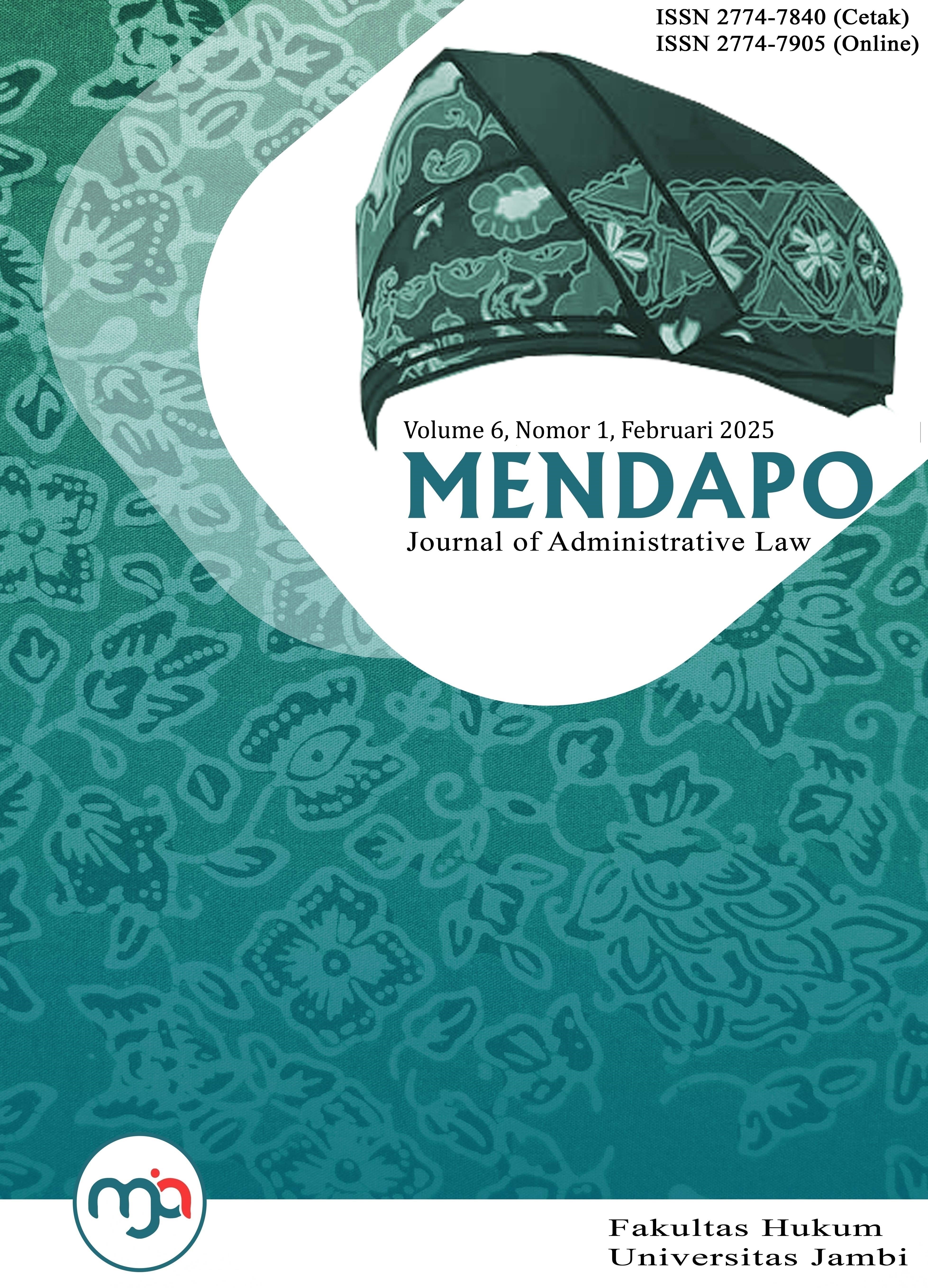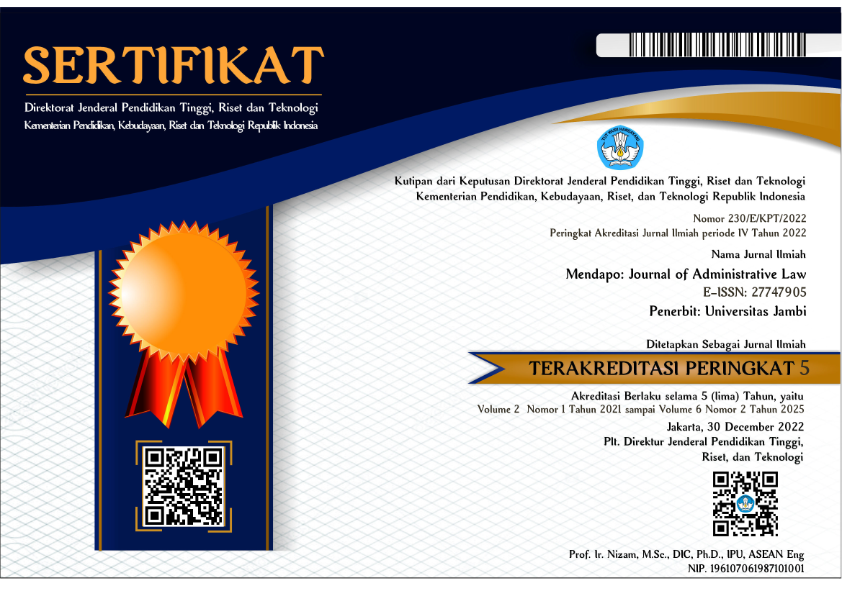The Role of the Lamaholot Tribal Customary Justice Institution in Settling Customary Violations during Murung Keneber (Planting Season)
Peran Lembaga Peradilan Adat Suku Lamaholot dalam Penyelesaian Pelanggaran Adat Saat Murung Keneber (Musim Tanam)
DOI:
https://doi.org/10.22437/mendapo.v6i1.38556Keywords:
Customary Justice Institution Murung Keneber Customary Offence Resolution Lamaholot Tribe.Abstract
Indigenous peoples have characteristics in every activity. One of the characteristics in the life of indigenous peoples, especially the indigenous people of the Lamaholot tribe, is the customary judicial institution of the Lamaholot tribe. The purpose of this study is to determine and analyse the description of the Lamaholot customary judicial institution and the role of the Lamaholot customary judicial institution in resolving customary violations during murung keneber. This research is an empirical legal research with primary and secondary data. The data were collected through interviews and literature study. The results obtained are that there is a customary judicial institution of the Lamaholot tribe that has a role in resolving customary violations during murung keneber (planting season). This institution prioritises peace and recovery efforts (mela sare). The process of resolving customary violations through the Lamaholot customary justice institution is guided by Lamaholot customary law which still believes in the power of Dewa Rerawulan Tanaekan (God) and Ama Opo Koda Kewokot (ancestors). The settlement of customary violations through the Lamaholot customary judicial institution in Leworahang, Ile Padung Village is carried out by the belen suku onen (tribal chief) Raja Tuan who is the four major tribal parts in the Lamaholot tribe consisting of the koten, kelen, hurit and maran tribes, witnessed by belen suku onen from other tribes in the village/lewotana, and attended by ata nalan (the offending party). The Lamaholot customary justice institution plays a role in resolving customary offences. The settlement has a distinctive feature because the Lamaholot customary justice institution carries out the settlement of customary violations through traditional ceremonies (loge towe tonu wujo). It is expected that the indigenous people of the Lamaholot Tribe will maintain the characteristics of the Lamaholot Tribe's customary judicial institution so that it remains effective in resolving customary violations.
Downloads
Downloads
Published
How to Cite
Issue
Section
License
Copyright (c) 2025 Mary Grace Megumi Maran

This work is licensed under a Creative Commons Attribution 4.0 International License.







